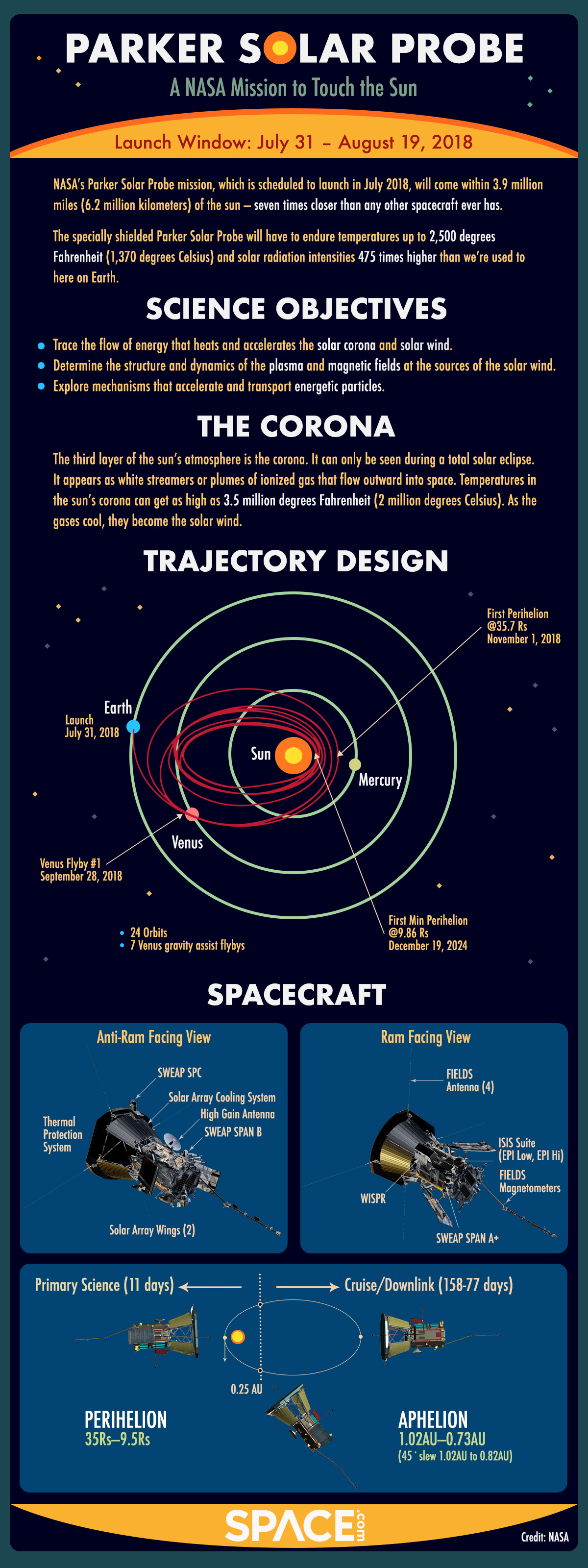NASA's Parker Solar Probe Mission to the Sun Explained (Infographic)

NASA's Parker Solar Probe mission, which is scheduled to launch in July 2018, will come within 3.9 million miles (6.2 million kilometers) of the sun — seven times closer than any other spacecraft ever has.
The specially shielded Parker Solar Probe will have to endure temperatures up to 2,500 degrees Fahrenheit (1,370 degrees Celsius) and solar radiation intensities 475 times higher than we're used to here on Earth.
If all goes according to plan, the Parker Solar Probe will zoom close to the sun 24 times between 2018 and 2025, gathering a variety of data about the sun's structure and magnetic and electric fields, as well as the energetic particles cruising near and away from Earth's star. This information could help researchers solve two longstanding mysteries: How the solar wind is accelerated and why the sun's outer atmosphere, or corona, is so much hotter than the solar surface, NASA officials have said.
Follow us @Spacedotcom and Facebook.
Join our Space Forums to keep talking space on the latest missions, night sky and more! And if you have a news tip, correction or comment, let us know at: community@space.com.
Get the Space.com Newsletter
Breaking space news, the latest updates on rocket launches, skywatching events and more!
Jef was Space.com's Deputy Director of Photography who assisted with curating many of the interface visuals found on Space.com. Space photography inspires him in the most profound ways and he's filled with joy having shared that experience with all of our readers. He also had the privilege of working with illustrator Melanie Lambrick in creating Space.com's 20th anniversary posters in 2019 that were available for free at various live events. He was previously a Photo Editor at Entertainment Weekly and has gathered 20+ years of experience as a Photo Editor/Illustrator/Graphic Designer in web and print, most recently for People and The Messenger.



